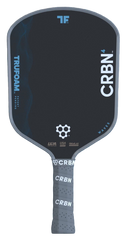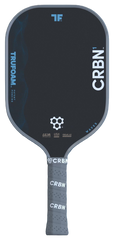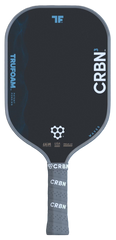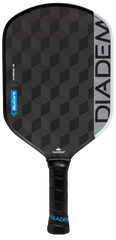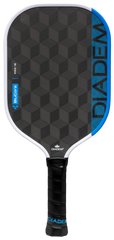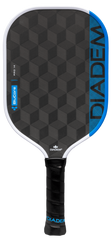Pickleball has really taken the sports world by storm, capturing the hearts of players of all ages with its unique mix of tennis, badminton, and ping pong. Whether you’re a complete novice or someone looking to sharpen your skills, getting a grip on the game is essential.
This guide will walk you through everything from the basics—like the equipment you need and how to set up the court—to the key rules and strategies.
By the end, you’ll be all set to jump in, keep score, and impress your friends on the court!
What is Pickleball?
Pickleball is an exciting paddle sport that mixes the best parts of tennis, badminton, and ping pong, making it perfect for players of all ages and skill levels. It started back in the mid-1960s, and since then, it has exploded in popularity.
You’ll find plenty of recreational play options and competitive tournaments hosted by enthusiastic pickleball organizations. As you delve into this beginner's guide, you’ll uncover the basic rules, scoring systems, and gameplay tactics that are key to enjoying pickleball, whether you’re up for singles or doubles matches.
How to Play Pickleball?
Playing pickleball is such a fun experience that combines strategy, skill, and a bit of teamwork.
To dive in, you’ll want to get a grasp on the basic rules of the game, the court dimensions, and how the scoring system works, whether you're planning to play singles or doubles.
As you familiarize yourself with the key player positions and the rhythm of the game, you’ll really start to enjoy the thrilling rallies and the techniques that make this paddle sport so exciting.
What Equipment Do You Need?
To play pickleball, you'll need some essential gear: a paddle, a pickleball, a net, and the right court markings. Look for a paddle that’s lightweight and durable, specially designed for pickleball. The ball you’re using should be plastic and have holes, which gives the game its unique dynamics. Make sure your play area is set up correctly with the right dimensions and markings to get the best experience.
Choosing the right paddle is super important since they come in different materials like wood, composite, and graphite. Each type offers varying levels of control and power, so you’ll want to pick one that suits your style. The pickleball itself—a plastic sphere with holes—also plays a big role in how the game flows, influencing its trajectory and spin.
Proper court markings are key too; they not only help define the boundaries but also keep the game flowing smoothly, ensuring everyone knows where they should be. Investing in quality equipment, from paddles to balls, can seriously boost both your performance and enjoyment, making each match way more rewarding.
What is the Court Setup?
Understanding the court setup is key to having a great time playing pickleball. The dimensions and layout can really influence your gameplay strategies and where you position yourself on the court. A standard pickleball court is 20 feet wide and 44 feet long for doubles play, with specific areas marked out as the kitchen (non-volley zone) and the service areas. Getting familiar with these court markings will help you navigate the game's flow and rules more smoothly.
The kitchen area, which stretches 7 feet from the net on both sides, is super important for shaping your offensive and defensive strategies. You need to stay out of this zone when executing volleys; if you step in, you risk committing a fault.
Knowing the exact measurements not only affects how you position yourself during rallies but also determines how you approach your shots. The dimensions of the service area are crucial for effective serving, requiring precision and awareness that add to the game's complexity and enjoyment. Mastering these elements can really take your performance and strategy on the court to the next level.
What are the Basic Rules of Pickleball?
Understanding the basic rules of pickleball is essential for ensuring fair play and getting a handle on the dynamics of the game. From the serve sequence to the scoring system, each rule shapes how the game is played and how players interact with one another.
Knowing these rules—like the fault rules and player etiquette—is crucial if you're looking to join in on matches, whether you’re playing for fun or diving into something more competitive.
What is the Serve Sequence?
In pickleball, the serve sequence is crucial for kicking off gameplay and racking up points. You need to start your serve from behind the baseline and send that ball diagonally over the net to your opponent's service area. Getting the serve sequence right is key to avoiding faults and keeping the game flowing smoothly, which makes it more enjoyable for everyone involved.
To nail a proper serve, hold your paddle below your waist and strike the ball with an upward motion. This way, you make sure it clears the net and lands squarely in the designated service box. Remember, both feet should stay behind the baseline when you serve, and the ball shouldn’t bounce before you hit it.
Watch out for these common faults:
- Failing to hit the ball below your waist,
- Stepping on or over the baseline while serving,
- Sending the ball out of bounds.
Mastering your serve not only sets the tone for the match but also significantly impacts your scoring. A well-placed serve can put pressure on your opponent and open up opportunities for points.
What are the Serving Rules?
The serving rules in pickleball are all about promoting fair play and keeping the competition lively. You need to follow specific guidelines, like making your serve underhand and ensuring it lands in your opponent’s service area.
By getting a handle on rules related to faults, the let serve, and side out scenarios, you can enhance your game and steer clear of common blunders.
For example, if you don’t strike the ball below your waist or it hits the ground before crossing to the other side, you’ve just committed a fault, and that means you lose the serve. Many players find the let serve rule tricky; if a serve hits the net but still lands in the correct service box, it’s considered valid. This can definitely create some confusion, especially when the pressure is on.
By understanding these nuances and the immediate consequences—like lost points or a turnover of serve—you can really step up your performance and enjoy the game even more.
What are the Non-Volley Zone Rules?
The non-volley zone, often called the kitchen, is a crucial area on the pickleball court that really influences your gameplay strategies. You need to steer clear of this zone when volleying the ball; otherwise, you’ll end up with a fault. Getting a good grasp of the non-volley zone rules is key to keeping proper player etiquette and enjoying some friendly competition.
But it’s not just about where you stand; this zone makes you think critically about your shot selection and movements. If you keep your distance from the kitchen, you’ll be better prepared for those incoming volleys and can respond more effectively to your opponent's aggressive plays. If you're new to the game, you should be particularly careful—stepping into the kitchen can lead to some pretty frustrating errors.
To sidestep these common pitfalls, it’s a smart move to practice your footwork and positioning. This way, you'll develop a solid understanding of when to engage with the kitchen and when to back off. Getting familiar with the rules around this zone can definitely enhance your gameplay and cut down on faults, making your time on the court a lot more enjoyable.
What are the Scoring Rules?
Scoring rules in pickleball dictate how you earn points and win matches. In most games, only the serving team can score points, and matches are usually played to 11, 15, or 21 points, depending on whether it’s a tournament or just a casual game. Getting familiar with the scoring system will really help you understand the flow of the game and the strategies involved.
You’ll earn one point for every successful rally you win while serving, which means each serve is super important to your team’s success. The importance of game points becomes pretty clear when you realize that you need to reach the designated point total while leading by at least two points to win the match.
Disputes over scoring can pop up, especially if you and your opponents are unsure whether a point was won or lost. To handle these situations, it’s a good idea to establish clear communication with your teammates. You might even want to refer to a designated scorekeeper or use an on-court referee if things get tricky. Keeping an open discussion and respecting each other’s perspectives can really help maintain the spirit of the game.
What are the Advanced Rules of Pickleball?
As you get better at pickleball, grasping the advanced rules becomes key to boosting your gameplay tactics and competitive edge.
These rules, like the double bounce rule, let rule, and fault rule, give you a deeper understanding of the game flow and strategy. This knowledge helps you make smarter decisions during matches.
What is the Double Bounce Rule?
The double bounce rule is one of those quirky aspects of pickleball that really shapes how you play and how rallies unfold. Basically, after the serve, you and your opponent have to let the ball bounce once before you return it. This rule helps promote longer rallies and adds a layer of strategy to the game.
You’ll find yourself adjusting your positioning carefully because of this requirement. For example, when one side lets the ball bounce, the other team can sneak closer to the net, gearing up to attack as soon as they make their return. This opens the door for some aggressive net play and really puts pressure on your opponents.
On the flip side, you also need to pay attention to the angles and trajectories when returning the ball. A perfectly placed return during this phase can completely change the momentum of a rally. So, the double bounce rule isn’t just about moving your feet—it’s also about making smart strategic choices.
What is the Let Rule?
The let rule in pickleball comes into play when your serve touches the net but still lands in the correct service area. According to this rule, if that happens, your serve is considered a let, and you get to replay it without any penalty. This can really shake up the scoring and flow of the game.
You’ll often see this ruling pop up during high-stakes matches where every point counts, which might make you rethink your serve. For example, if you feel like your serve was impacted by the let, it’s natural to feel a bit frustrated or to want some clarification. In these moments, clear communication is key, since you need to know that the let doesn’t count against your attempts.
If any scoring disputes come up, it's best to keep things friendly. You could agree to use the previous score as a starting point, ensuring the game keeps rolling without any lingering tension.
What is the Fault Rule?
The fault rule in pickleball covers various infractions that can throw a wrench in the game and decide who gets the points. Faults can pop up during serves, returns, and other gameplay situations, so it's super important for you to understand these rules to keep the game flowing and maintain proper player etiquette.
You might find yourself committing foot faults when serving, which happens if you step on or over the baseline before making contact with the ball. Similarly, during returns, if you hit the ball before it crosses the net, you can accidentally incur a fault. And let's not forget about volleying within the non-volley zone—those can lead to some unforced errors, which nobody wants.
To keep these faults to a minimum, it’s key for you to practice good foot positioning, stay aware of court boundaries, and get familiar with the non-volley zone rules. With a bit of repetition and mindfulness, you can boost your game and cut down on those pesky penalties.
What are the Strategies for Playing Pickleball?
Developing effective strategies is key to your success in pickleball. It helps you maximize your strengths and exploit your opponents' weaknesses.
To really up your game, you’ll want to understand player positions, work well with your teammates, and utilize specific gameplay tactics. These strategies can significantly enhance your overall performance on the court.
How to Position Yourself on the Court?
Proper positioning on the pickleball court is crucial for your gameplay success and helps you respond effectively to your opponent's shots. By getting familiar with the court layout and different player positions, you can boost your ability to control the game and make the most of your strengths.
Strategic movement matters just as much in singles as it does in doubles, affecting not only your performance but also that of your partner and your opponents. In singles, you should aim to balance between the baseline and the net, so you're ready to intercept and respond to shots coming from all angles.
Regarding doubles, you'll need to coordinate closely with your partner. Keeping an optimal formation can create chances for angled shots and volleys while reducing gaps in your defense. To really nail down your court positioning, it's all about anticipating your opponent's next move, staying light on your feet, and making quick adjustments after every shot.
Practicing communication and setting a clear plan with your partner can take your court coverage to the next level, allowing both of you to work together like a well-oiled machine.
What are the Different Shots in Pickleball?
Mastering different shots in pickleball is key to developing a solid gameplay strategy. It helps you respond effectively to whatever situation pops up on the court.
You’ll want to get the hang of key shots like volleys, drop shots, and overhead smashes, as each one has its own unique purpose in your tactics.
Understanding how these shots work can seriously boost your performance. For example, if you time your volley just right, you can take control of the net, putting pressure on your opponents and leaving them with fewer options.
A well-executed drop shot can really catch your rivals off-guard, especially if they’re hanging out at the backcourt—it could lead to an easy point for you.
And let’s not forget about the overhead smash; it not only shows off your power but can also shift the momentum of the match by shaking your opponent's confidence.
Using these shots strategically during those crucial moments can really make a difference, so it's essential to incorporate practice drills that focus on shot accuracy, timing, and placement.
How to Communicate with Your Partner?
Effective communication with your partner is crucial for success in doubles pickleball. It boosts your teamwork and keeps both of you in sync with your strategies. By setting up clear signals and keeping those lines of communication open, you can really enhance your coordination on the court.
Using verbal cues, like calling out shots or positions, lets you make real-time adjustments during the game. For example, if you shout "mine!" it clearly indicates that you're taking the shot, preventing any confusion and keeping the play smooth.
Don't underestimate the power of non-verbal signals, either. Hand gestures or eye contact can communicate strategies without tipping off your opponents. If you establish these methods before the match, you'll both feel more comfortable and prepared.
A successful duo might even have predetermined plays for different scenarios, which allows you to react quickly and efficiently. Creating a communicative atmosphere not only boosts your performance but also makes the game a lot more enjoyable.
How to Keep Score in Pickleball?
Keeping score in pickleball is essential for tracking your progress during matches and maintaining the integrity of the game. The scoring system might change depending on whether you’re in a tournament or just playing for fun, but grasping how to track points and matches will keep you engaged and in the loop throughout your gameplay.
How to Determine the Serving Team?
Determining the serving team in pickleball is a pretty straightforward process, and it can really impact how the match plays out in terms of scoring. Usually, you’ll decide which team serves before the game starts, following the established scoring system and serve sequence rules.
Before you dive into the match, teams often do a practice rally or have a coin toss to figure out which side will serve first. This adds a nice little strategic twist right from the get-go.
Understanding the serve sequence is super important; it helps you keep track of when it’s your turn to serve or receive, especially since teams switch after every rally they win. This structured rotation not only helps you strategize your gameplay but also plays a big role in adjusting to your opponent’s strengths and weaknesses, ultimately boosting your team's performance throughout the match.
What is the Difference Between a Game and a Match?
When you're getting into pickleball, it's super important to know the difference between a game and a match. A game usually means one instance of play where you're trying to hit a specific number of points. On the other hand, a match is made up of a series of games to figure out who the overall winner is.
This distinction really matters, especially in tournament settings. For instance, in some tournaments, a match could be the best of three games, while others might use a single-elimination format, where you keep playing until you've lost a certain number of matches. Scoring can change too; some matches stick to the traditional scoring up to 11 points, while others might use rally scoring, where you can score points whether you’re serving or receiving.
These variations not only change the pace of the game but also influence your strategies and objectives. You’ll find yourself adapting your style based on the format you’re facing.
Frequently Asked Questions
What is pickleball and how do you play?
Pickleball is a fun and fast-paced racquet sport that combines elements of tennis, badminton, and ping pong. It is played on a court with a net, and players use paddles to hit a perforated plastic ball. The game can be played in singles or doubles, and the first team to reach 11 points (with a 2-point lead) wins.
What are the basic rules of pickleball?
The rules of pickleball are similar to those of tennis, with a few key differences. The serve must be underhand and made diagonally cross-court, and the ball must bounce once on each side before players can start volleying. The ball is also allowed to bounce off the non-volley zone (the area close to the net) as long as the player is not standing in it.
How is scoring in pickleball different from other sports?
In pickleball, points can only be scored by the serving team. If the serving team wins the rally, they get a point and continue serving. If the receiving team wins the rally, they get to serve next. Unlike other sports, points are only scored when the serving team is serving, which can lead to some exciting back-and-forth exchanges.
What is the non-volley zone and what are the rules around it?
The non-volley zone, also known as the "kitchen," is the area close to the net where players are not allowed to volley (hit the ball before it bounces). This rule is in place to prevent players from smashing the ball right at their opponents, which can be dangerous. Players are only allowed to enter the non-volley zone to play a ball that has bounced inside it or to retrieve a ball that has bounced off the non-volley zone.
Is there a difference between indoor and outdoor pickleball?
Yes, there are some differences between indoor and outdoor pickleball. Indoor courts are typically smaller and have a smoother surface, while outdoor courts are larger and have a rougher surface. Outdoor pickleball is also affected by wind and other weather conditions, which can change the way the ball moves. However, the basic rules and scoring of the game remain the same regardless of the court type.
Can I use any kind of paddle to play pickleball?
No, there are specific paddles designed for pickleball that are the only ones allowed in official tournaments. These paddles are usually made of lightweight and durable materials such as graphite or composite. Using a non-regulation paddle can result in a penalty or disqualification in a tournament setting.
